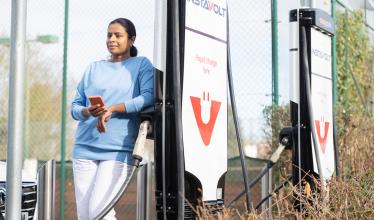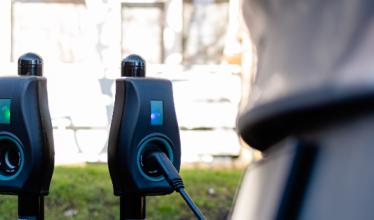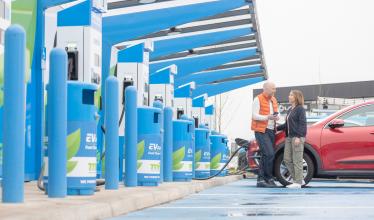Destination charging infrastructure enables you to charge your electric car while spending time at locations and attractions such as restaurants, supermarkets, garden centres, National Trust sites and many other destinations.
In essence, destination charging is designed to offer you the convenience of topping up your car battery while you’re away doing something more exciting. You could leave the car behind to go shopping, eat out or explore the great outdoors – and head back to find it nicely topped up upon your return, or even fully charged. This will often save you from needing to charge on your return or onward journey.
If you’ve just made the switch to an electric car but are unsure about how it all works, scroll on for more info and advice about destination charging in the UK.
Destination charging in the UK
Across the country, charge point operators such as RAW Charging, Mer and Roam are installing medium-powered chargers for electric car drivers to top up their batteries while at a whole range of destinations.
Thanks to super-speedy en-route charging provision and the increasing ranges of newer EV models, the days of range anxiety on longer journeys are pretty much gone. But this is also thanks to a large number of destination charging providers that enable drivers to add a top-up charge almost anywhere they go.
As well as the three networks above, operators such as GeniePoint, Osprey, Pod Point and Tesla are continuing to roll out charge points at hotels, pubs, supermarkets and other tourist attractions.
And whichever destination you choose to charge your car, the Zapmap app has you covered for searching, planning and paying for charging.

Operators such as Mer are installing medium-powered chargers for EV drivers to top up their batteries.
How quick are destination charge points?
Destination chargers are usually designed to make use of the time you’re away from your car, which varies between an hour and a few hours depending on the location. This means destination charge points tend to have a lower power rating than their speedier, ‘en-route’ cousins.
Generally speaking, destination chargers across the country have power ratings that range from 7kW - 50kW. This means you’ll come across both AC and DC charge points when topping up at a destination.
With this in mind, most of these chargers will be AC, and between 7kW and 22kW. You’ll also find some quicker DC devices at locations such as supermarkets, many of which will be 50kW, though some networks have installed 25kW DC chargers with CCS or CHAdeMO connector types.
While charging speed can vary, a 7kW charger will generally charge your car from 0-80% within several hours, while a 22kW charger will do so within one to two hours.
What do destination charge points look like?
Destination charge points are manufactured in a variety of different styles, some of which you can see below.
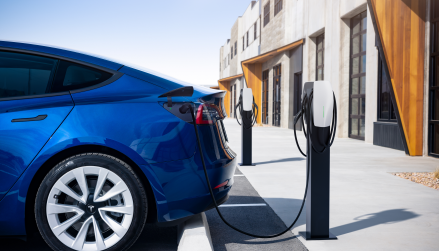
Tesla destination chargers are often wall-mounted, or on small posts as pictured. They are free to use by all Tesla drivers who are customers of the destinations where the points are located. Typically 22kW chargers, they are intended to top up the Tesla's battery over the course of several hours.
The company often installs a non-Tesla-specific Type 2 charge point alongside its destination chargers. These are available for any EV driver to use, providing they have a Type 2 inlet on their car, since the units come with tethered cables.
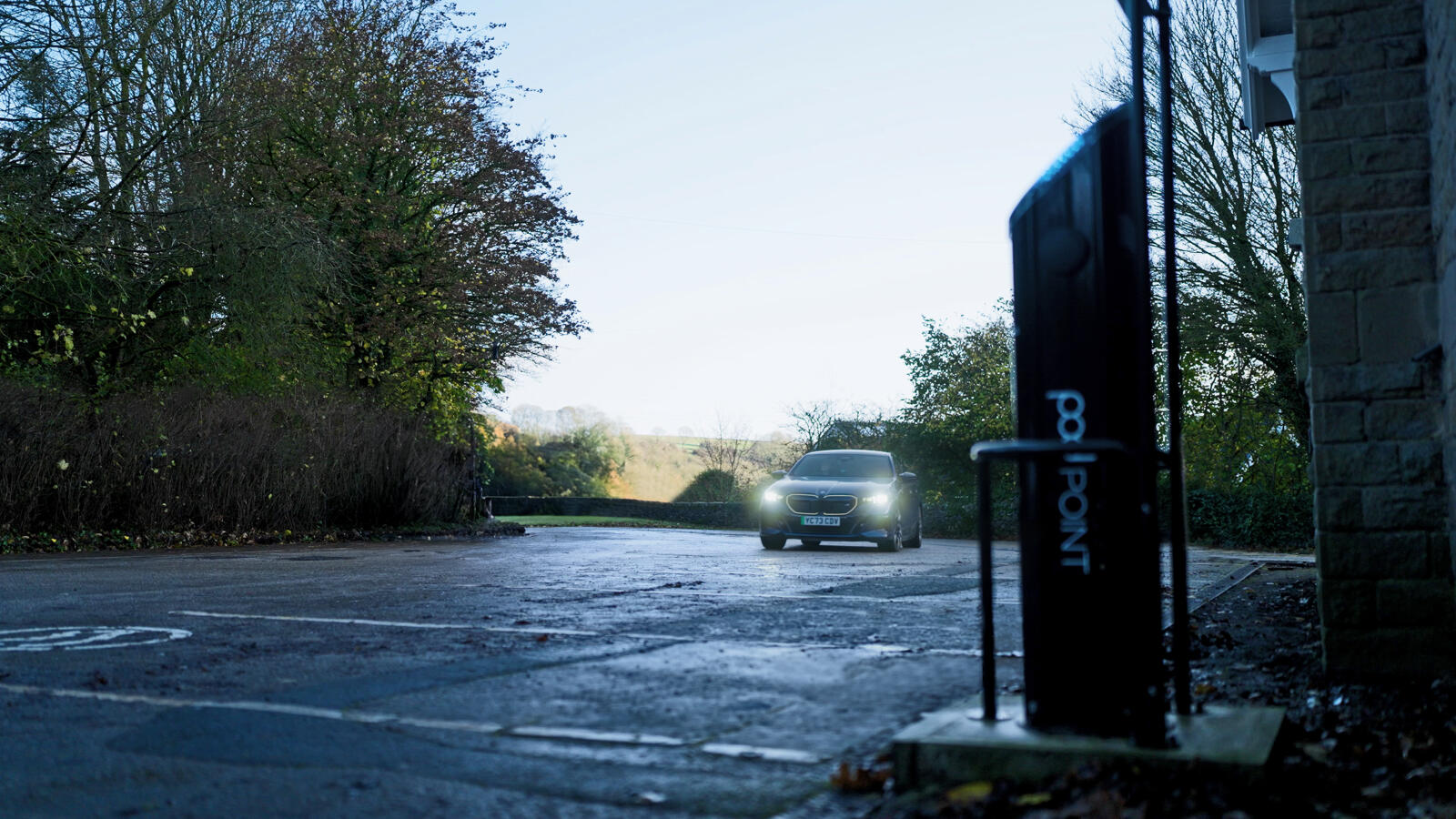
The Pod Point network aims to offer a charge point everywhere drivers park. As such, Pod Point locations include Tesco and Lidl stores, as well as Center Parcs and National Park locations - for example in the Peak District. The operator's charge points range from bollard-style chargers (pictured) to larger charging units often found in supermarket car parks.
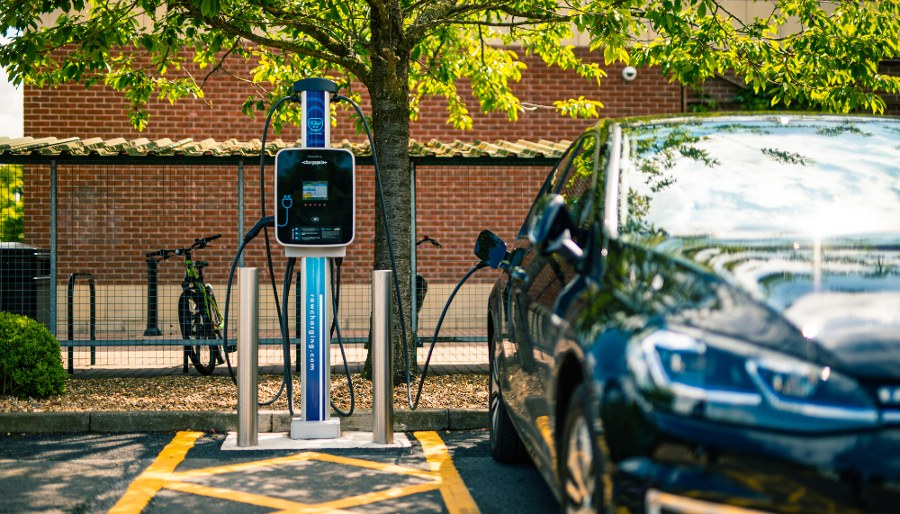
Like Pod Point, RAW charge points come in a range of types and sizes, with bollard-style RAW chargers usually found at retail locations. RAW Charging supplies charging infrastructure for several major property owners in the UK, including McArthurGlen Outlets, Aviva Investors and Greene King pubs.
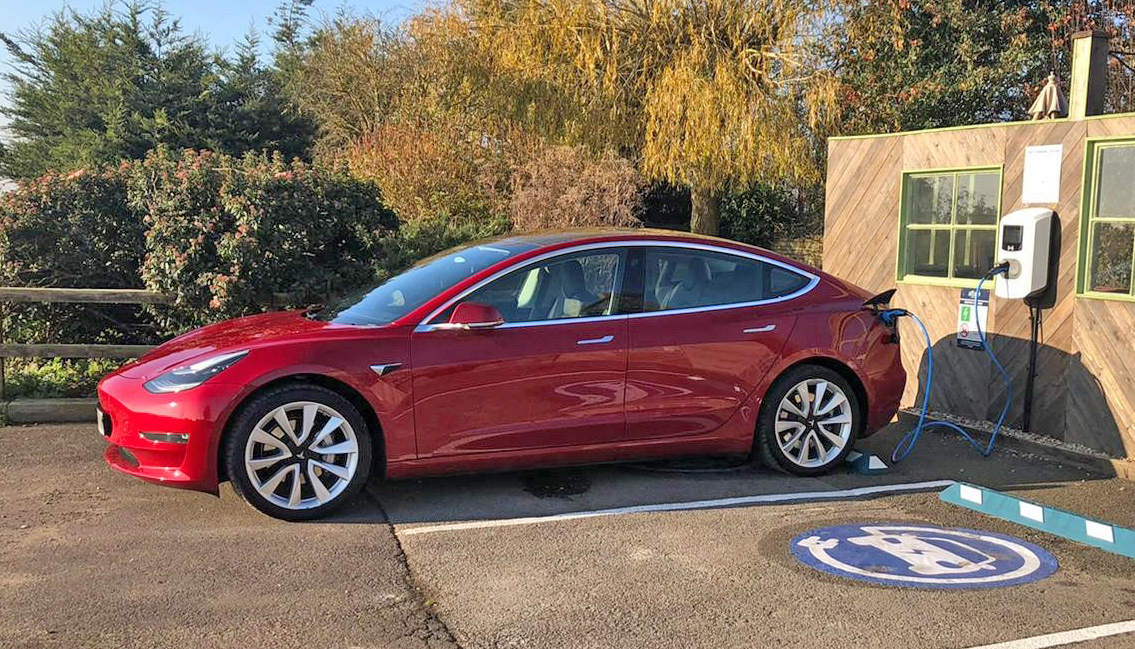
Monta supplies the back-office software and payment systems for EV chargers belonging to a range of businesses. As such, its physical charge points vary from location to location. Wall-mounted and bollard-style charge points are the most commonly used in destination charging as they are usually lower power and take up less space in existing car parks.
How to find destination charge points
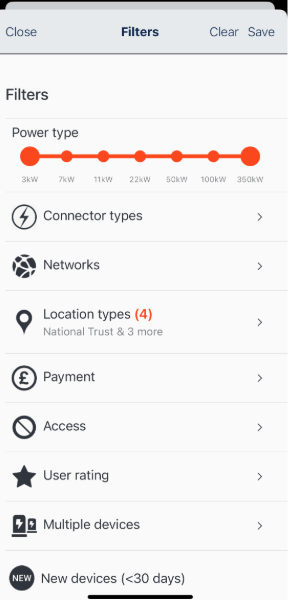
Wherever you are in the UK, you can locate destination charging points quickly and easily with the Zapmap app and desktop map, both of which enable you to see the live availability status of more than 75% of these charge points, 24/7.
One way to find charge points at destinations of all sorts is to filter by location type.
In the ‘Filters’ menu, select ’Location types’, then choose from whichever of the many location types suits your needs. Select ‘apply’ or ‘save’ as appropriate.
You may also want to use the ‘Power type’ slider to further refine your search. This enables you to filter for chargers with a lower power rating, which you’ll typically find at destinations such as supermarkets and garden centres.
For shorter stops, it’s best to look for higher-power chargers to optimise charging time, while for longer stays you’ll likely want to go for a lower-powered option.
How to pay for destination charging
While some destination charge points now accept contactless payments, you'll still need to use the operator’s app to pay for charging at others - although this is beginning to change.
Operators such as Alfa Power, Mer and GeniePoint, however, all provide destination charging points that are Zap-Pay enabled at a range of locations across the country.
Zap-Pay is a simple way to pay for charging from within the Zapmap app, helping you to avoid the hassle of using multiple apps across different networks.
Select Zap-Pay in the ‘Payment’ filter to find charge points where you can use it, and enjoy paying quickly and easily for your charging session. You can also use Apple Pay or Google Pay.
Remember to check for any parking limitations and restrictions. Many car parks charge a fee to park as well as the electric vehicle charging cost, and will send out fines if you stay beyond the time limit.
It’s also worth remembering that some destination charge points are free to use, such as those offered for hotel guests. You can find these on Zapmap by filtering for free EV charging points under ‘Payment’.
Destination charging étiquette
In general, it’s polite to move your vehicle from the charging bay once your charging session has finished so that other drivers can access it, especially if they’re already waiting to charge.
It might be worth thinking of a charge point as a community hub rather than a personal parking space. For instance, some EV drivers help others to know when the charge point will become available by leaving a note on their windscreen indicating their expected time of departure.
Queues at destination charge points tend to be less common than at en-route charge points, where the power ratings are higher and visitor turnover more frequent. Even so, once you’re topped up it's time to unplug and move on. We recommend that Zapmap users pay for charging via Zap-Pay, so you can check on the status of your charge at any time in the Zapmap app.
Don’t forget to pack up your charging cable if you’ve used your own, and if you do spot another EV driver struggling to plug in, it’s always nice to lend a helping hand or pass on your charging expertise.
If you’d like more helpful hints and tips on other types of charging, you can explore our en-route and on-street charging guides.

